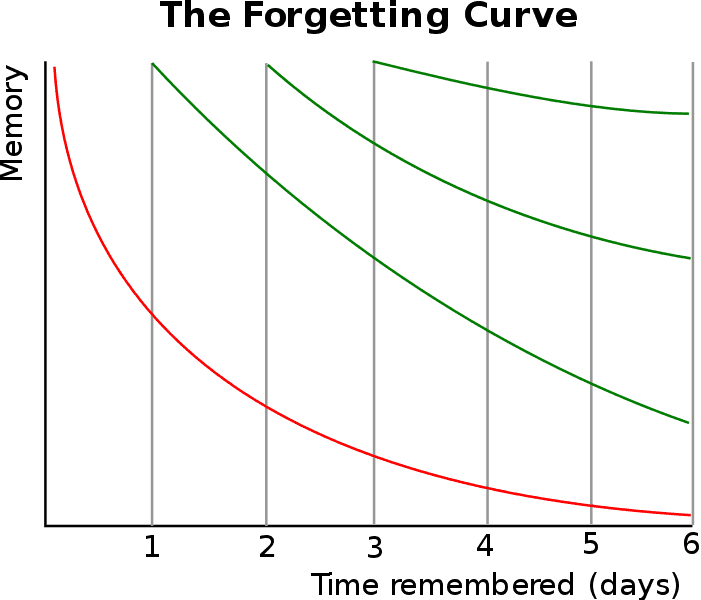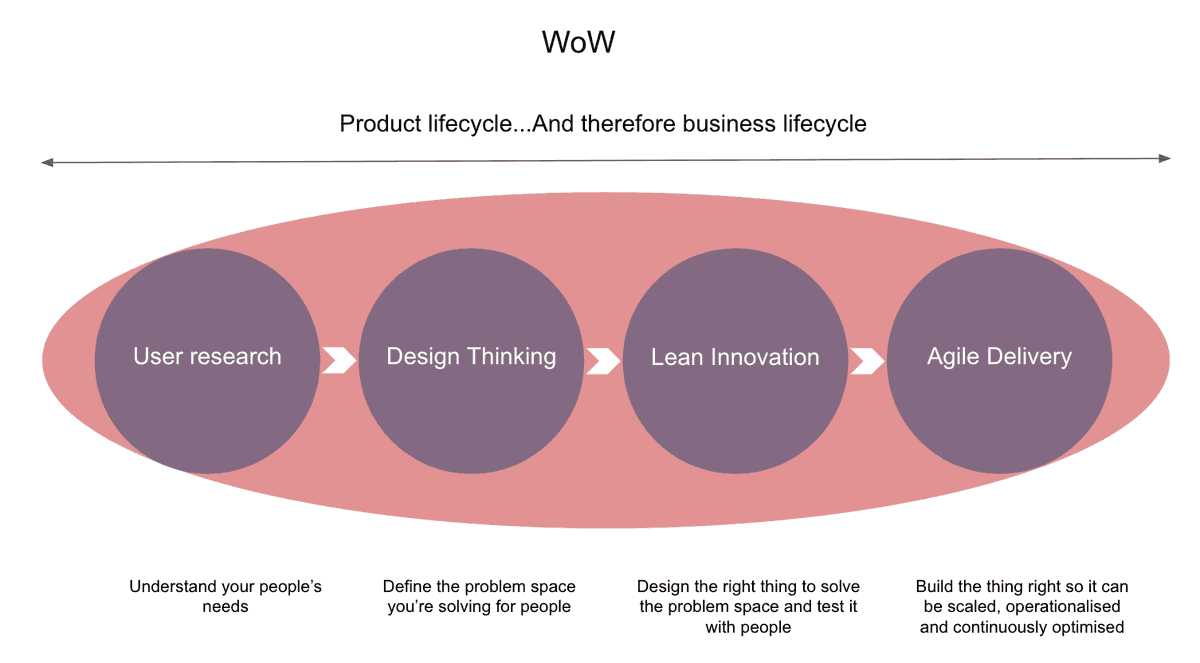#5 Method in the madness — keep it simple

Note: This is the fifth post of the book after the introduction. If you’re new to the book, start with the introduction. Or visit the full table of contents.
Designing new businesses or re-designing the old to shape a new economy, is about changing how we do things. And change is complex. Human behaviours (and make no doubt, this is what you’re designing for) — the thoughts and feelings behind these behaviours are complex. You’re trying to meet people’s needs, because if you do that, people will listen to you and adopt what you’re doing, because you’re giving them what they want. People’s needs often come from a complex place — a myriad of situational, environmental and emotional factors come together to create them. Especially in business.
Add to this that in business you’re usually deconstructing learned processes, established systems and policy that support and enable people’s day to day behaviours — and yeah, I mean you get it right? The struggle is real. It’s already getting messy just talking about the problem.
Undoubtedly, the most important thing about making change happen, is keeping things simple. If there’s one defining principle behind Po3 and the way we work, it’s that everyone has to understand why you’re doing what you’re doing before anything else. If people don’t believe in what you’re doing, understand how it’s going to work and have their expectations set as to how the thing rolls out, you’re going off half cocked and likely to make things more difficult down the line. Or just fail. Simplicity is the key.
Don’t get bogged down in unnecessary detail. The biggest challenge when you want to change anything as complex as human behaviour and the entire organic workings of an organisation is that you need a simple place to start and yet everything is interlinked. You can’t change the whole at once, but that has to be your endgame. It’s catch 22. If you look at one thing in isolation, you don’t consider all the variables at play and perpetuate existing problems by creating something that works standalone, but is at odds when plugged back into the rest of the organisation. If you try to fix everything at once it’s too costly, too slow and there aren’t visible benefits to keep people engaged and believing in what you’re trying to achieve. Understanding the whole but having somewhere tangible begin. Knowing you have an end destination in mind, but that you might end you somewhere completely different. Communicating the big picture while having one eye on a way to deliver it. It’s a lot.
You need simple guiding principles, a design system that will both inform the grand plan — and the task based delivery plan. Go back to the Agile Manifesto look at the Design Council’s double diamond. I’ve said it before and I’ll say it again, the more you get bogged down in rigorous process, the more you try to cookie cutter and industrialise the more likely you are to trip yourself up and move away from the outcome these principles are intended to produce. Every organisation, every problem, has its own nuanced needs. Flex and adapt.
“All models are wrong but some are useful”
George Box
Forget all that
Why’s it so important to have simplicity when we’re trying to solve a complex problem? Well, no-one’s going to remember that detailed plan wot you worked out. This is a fact. If you look into our ability to learn and retain information you’ll come across the German psychologist, Hermann Ebbinghaus and his 100 year old pioneering theories on memory. In particular it’s his theory of the ‘Forgetting Curve’ that gets all the attention. Based on experiments with his own memory, Hermann came up with an equation that shows how quickly we forget the things we learn. He hypothesised that we forget 50% of what we learn within 1hr of learning it. Bleak huh, what’s the point in learning ANYTHING.

You’d be right to approach Ebbinghaus’s findings with caution however. His sample size was pretty small. Just himself in fact. So he could be a complete statistical anomaly. Then there’s his content, in his experiments he learned three letter nonsense syllables such as ‘ZOF’. Not exactly the Iliad.
Good news is, there are ways to retain often expensive information (leadership training is a $366 Billion a year industry after all, let alone the weighty cost of repaying all those student loans). In the image above, the green lines represent how information is retained after repeated learning. So the first green line (left to right) is revisiting the information once, the second twice etc. Context and relatable content without a doubt, also improves our ability to maintain our memory of it. Hermann seems to have gotten very famous with not very rigorous methods. However I’m pretty sure we can all relate to how much we retained from the broad learning experience that was secondary school (or further or higher education) right — there’s definitely something in Hermann’s research.
There are other ways to mitigate some of the lossiness of learning. Partly through repetition but also through reward. If you’ve ever used Duolingo you’ll recognise the repetition and reward behaviours as you learn (cool badges — achievement unlocked!), and the whole concept is based around micro-learning and accessibility i.e. breaking learning into bitesize chunks and allowing you to digest at your own pace. Same in business, if the thing you’re learning gives you knowledge to advance your prospects or help you achieve more, that’s rewarding. Compliance L&D videos, not so much.
There’s also a lot of evidence that you remember things better when you’re in a heightened emotional state. One being enjoyment, but also (probably recommend this less in designing learning content) a state of fear. These learning behaviours are prevalent throughout human evolution, where as a species we’ve repeated behaviours to succeed in life or death situations — it’s where fight or flight comes from. Essentially if you make the learning interesting and emotionally charged, it’ll stick.
Why learning is SO important
Might seem an obvious question to ask, but it’s an important one. A lot of this book is about revisiting assumed ideas or interrogating things further, we’re not re-inventing the wheel, just re-focussing the effort. When you start to break down change, it’s about adaptability- everyone knows the old adage ‘change is the only constant’. It was the Greek, pre-socratic, stoic philosopher, Heraclitus of Ephesus that said this. He was grumpy (stoics by nature are) and famous for the contempt in which he held his peers, though he influenced both Plato and Aristotle, so people obviously still begrudgingly listened to him. His underlying theory was: Panta Rhei in Greek — Life is Flux, or all things change.
We need to not just accept change is a permanent state of being, but really look forward to it. That’s all ’innovation’ is, doing new stuff. Let’s do that, a lot and quickly. But to do that we have to unlearn and relearn constantly. The soft skills necessary to do this — listening skills for collaboration, empathy for other people’s experiences and perspectives, the shelving of ego and knowing that you know nothing (that was Socrates — all about the Greeks in this post for some reason), these are the skillsets necessary for a business to thrive. They’re also the skills that a lot of people seem to label ‘digital’. Nothing to do with technology at all and entirely to do with communication and ways of working.
The point that disruption is rife, startups are coming, innovate or die etc has been done to death. So I won’t do that. There’s an amusing video that surfaced a few years ago showing brand ranking 2000 — 2018. It’s got a fun soundtrack and shows how quickly things change in business — so I’ll do that instead. Watch it at double speed from about 2:30min and you’ll get the most enjoyment — I did.
Mindsets for movement
Understanding how we learn is incredibly important if you want to get anywhere. All change begins with the communication of ideas. In recent years it’s become very in vogue to talk about mindset shift. Amongst all the semantic confusion applied to the change, marketing, design and associated industries, this is actually kind of useful.
It’s useful because it’s an acceptance that we’re not talking about small incremental changes to the way we do things. It’s a pivot, an about face, an epiphany that people need to have. It’s an indication that this is different. Language is so important given change is all about communication of ideas. Mindset shift shows this is not what’s come before — the failure of many projects can be attributed to change apathy, when people tire of the next new thing, the next five year plan, the next raft of technologies, processes and appointments of highfalutin change makers.
It’s a useful phrase because we can understand what it’s trying to achieve, it’s descriptive and talks about the way we think as people — as humans. It’s not referencing technology for a start, which gives it much more credence than the ever ridiculous, obfuscating and pointless ‘digital transformation’. It’s always struck me as ironic, this industry’s ability to confuse more than clarify in it’s obsession with distilling subjects into semantic soundbites for simplicity’s sake.
Pincers at the ready
But whose mindsets are we shifting? In the same way you can’t approach one part of a problem without considering the whole you need to bring everyone along — but that’s a lot, thousands, sometimes hundreds of thousands of people — you’ve got to start somewhere. When designing a purpose driven business you cannot only have a top down approach (Executives etc) without a complementary bottom up approach (people on the front line, delivery etc) you have to be inclusive. You need a (waitforit) pincer attack. However, the people with the power, the budget, the leadership, the CEO — that’s where you have to start.
If the CEO doesn’t know why you’re doing this thing but just lets you get on — this is not a good thing, it’s a major red flag if they’re not the biggest card carrying advocate of the plan. Business priorities change, people and positions change, budgets get redirected, goals posts move. Unless the CEO is owning the plan, unless it’s their mission, their purpose — you’re going to get burned. And will follow another failed change initiative while change apathy sets in. A CEO that mandates ownership of change to the Chief Product Officer, Chief Innovation Officer, Chief Customer Officer, Chief Data Science Officer, Chief Transformation Officer, they’re mandating the future of their organisation. They’re mandating their role away and getting further and further from the reality of what’s happening. They won’t be CEO for long.
But, as soon as you have the Exec’ on board you need to be inclusive of the rest of the organisation from the word go. If people on the ground have a belief and a passion for what you’re saying that’s great, but without a task driven plan of action and regular communication as to how it’s going to effect everyone, interest wanes, people revert back to business as usual, you’ve lost them. You have to have the momentum of the masses to make it work. More on that later.
What you need to know
Changing mindsets is genuinely fun. Fun to experience, fun to be a part of. Landing new ideas, designing a shiny new future, exploring the art of the possible etc. People are without a doubt most engaged at this point. Later on you need to remember how you generated this excitement and imbue future parts of the plan with this kind of giddy energy.
But what are you changing a mindset to? You could learn about any of the many emerging technologies out there right? Listen to massive management consultancies and they’ll list them off for you, then bore you with the detail. The stuff you’ll forget. Within a day. The thing you need to learn, is a new way of working with others.
The biggest misdirection in business is that change is about technology. It’s 100% nothing to do with technology. The evolution of tech’ just means we can achieve different outcomes. People make shit happen. Though it feels like the tide is finally turning on that misconception. Having been practising user centred design since 2008, it’s nice to see the focus shifting to people. Ok, so the second biggest misdirection in business, is that new ways of working only apply to delivery.
I’ve written about this before in Three things that drive successful transformation. Essentially corporate has become obsessed with delivering and shipping things faster. Building new products and services faster and delivering them to market. So they focus on new ways of working (design thinking, lean, agile) within the delivery function and generally still run the business side, the ‘strategic brain’ of the organisation in the same way.
But coming up with a new idea, understanding if it’s commercially viable, technically feasible, operationally sustainable — this is your end to end business, not one part of it — it’s the entire thing, the entire product life cycle. If the business is separate from delivery, you’re just propagating the same old problems and one part of the organisation is at odds with the rest. Like a healthy organ being rejected by the body, there will be problems, you can count on it.

You’ve probably seen various versions of this image, other methodologies are available at your nearest consultancy. WoW stands for Ways of Working FYI and this, is what you need to land with your ‘Mindset shift’. I don’t mean simply a design thinking workshop, or an agile workshop. Though useful things in certain circumstances I’m sure. Understanding the way in which you go from idea to scalable business should now simply be a hygiene factor. But in the same way adoption of every shift takes longer than you think, it’s most probably not embedded as widely as it should be. It is most definitely the de facto way we work at Po3.
If these things are hygiene, it’s now imperative to explain what it means to be purpose driven, what it means to have a sustainable business and why this is the future of our economy. But, that’s for next time.
This is #TheFalseEconomy
If you want to talk about and explore anything we’ve said, get in touch, we’d love to hear from you because it makes us better.
Sign up for purpose
We're writing a book, a 'how-to' for the design and delivery of purpose driven, successful businesses.
Then we're giving it away, so anyone can use it.
